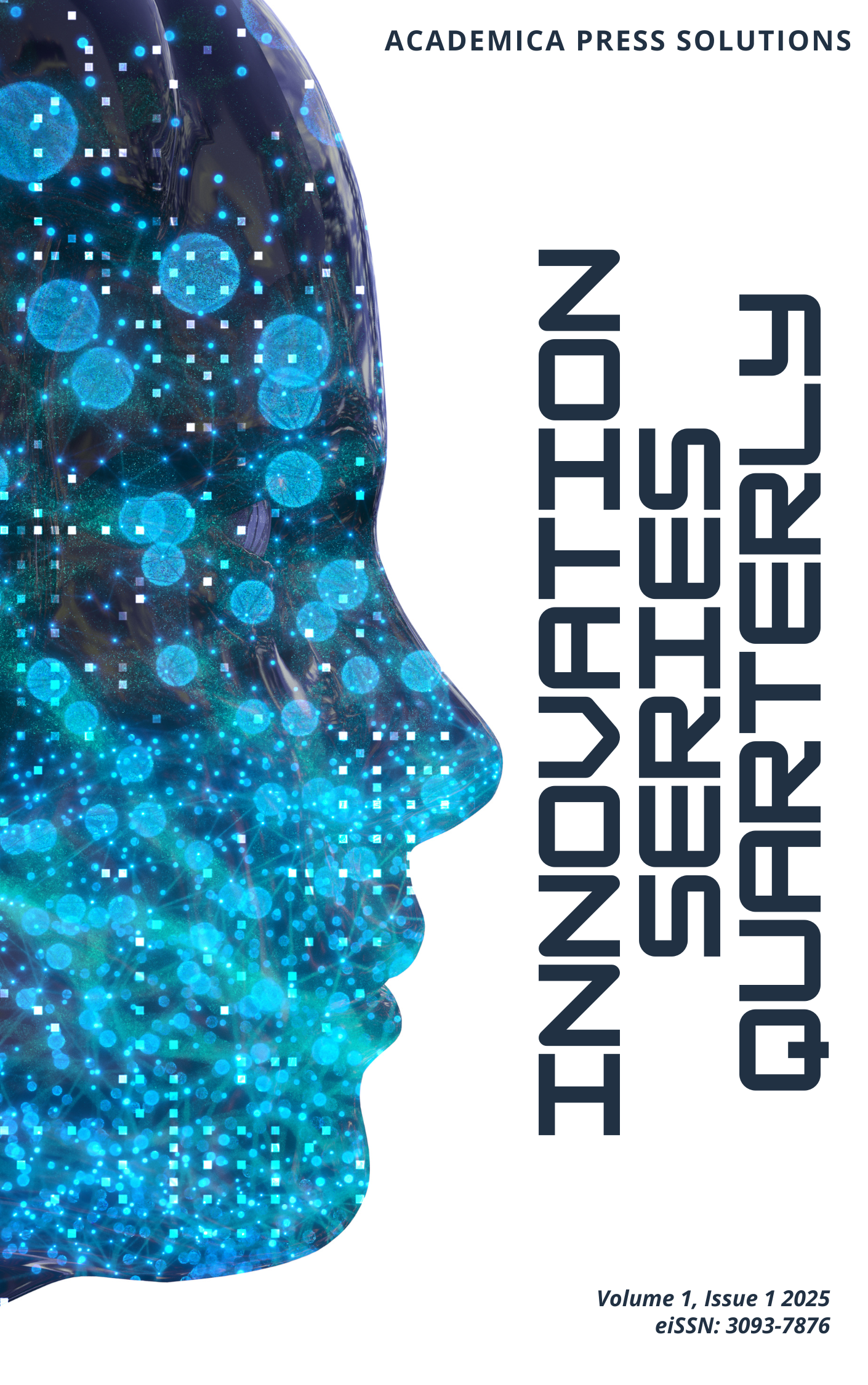Next-Generation Natural Sunscreen: A Six-Phase Homogenization Approach with Encapsulated Filters for Enhanced Photoprotection and Thermal Stability
DOI:
https://doi.org/10.64382/ak41be33Keywords:
Photoprotection, Natural Sunscreen, Six-Phase Homogenization, Eco-Conscious Formulation, Formulation Stability, Encapsulated Mineral UV FiltersAbstract
As concerns escalate regarding the dermatological safety and ecological impact of conventional sunscreens especially under intense UV radiation and high humidity in tropical regions like Malaysia there is a critical need for advanced, natural photoprotective solutions that deliver reliable efficacy without compromising environmental responsibility. This study presents a next-generation herbal–mineral sunscreen formulation employing a sophisticated six-phase homogenization process to achieve precise multi-phase microstructuring, which enhances stability, uniform dispersion, and sensorial performance of the active components. The formulation integrates bioactive botanical extracts, including α-Bisabolol and Roman Chamomile, with micronized Titanium Dioxide mineral filters to deliver broad-spectrum UV defence and excellent dermal compatibility. The formulation’s performance and resilience were rigorously validated through multiple assessment protocols: SPF Testing to quantify sun protection efficacy; a proprietary ThermoShield Assay designed to simulate intense heat exposure and demonstrate enhanced thermal barrier properties; and UV Transmittance Card Evaluation to visually confirm UV blocking performance. Results demonstrated consistent photoprotection, rapid absorption, a non-greasy texture, and a transparent finish without white cast effectively overcoming key limitations of conventional formulations. By combining high-performance sun protection, potent botanical bioactivity, and an eco-conscious profile through a controlled multi-phase production approach, this innovation sets a new benchmark in natural photoprotection and addresses the unmet need for safe, multifunctional sun care tailored to demanding climatic environments.
References
Aguilera, J., Cárdenas-González, D., Sánchez-Roldán, C., González, S., Bosch-García, R., Herrera-Ceballos, E., & De Gálvez, M. V. (2024). Qualitative and quantitative analysis of colorimetric response in different UV solar radiation level indicator bracelets based on photochromic substances. Frontiers in Photobiology, 2. https://doi.org/10.3389/fphbi.2024.1281474 DOI: https://doi.org/10.3389/fphbi.2024.1281474
Cefali, L. C. et al. (2017). Development and evaluation of microencapsulated sunscreen. Journal of Dispersion Science and Technology, 39(8), 1149-1152. https://doi.org/10.1080/01932691.2017.1385481 DOI: https://doi.org/10.1080/01932691.2017.1385481
Cozzi, A. C., Perugini, P., & Gourion-Arsiquaud, S. (2018). Comparative behavior between sunscreens based on free or encapsulated UV filters in term of skin penetration, retention and photo-stability. European Journal of Pharmaceutical Sciences, 121, 309–318. https://doi.org/10.1016/j.ejps.2018.06.001 DOI: https://doi.org/10.1016/j.ejps.2018.06.001
D’Orazio, J., Jarrett, S., Amaro-Ortiz, A., & Scott, T. (2013). UV radiation and the skin. International Journal of Molecular Sciences, 14(6), 12222–12248. https://doi.org/10.3390/ijms140612222 DOI: https://doi.org/10.3390/ijms140612222
Dong, Y. et al. (2019). Perspectives on the Next Generation of Sunscreen: Safe, Broadband, and Long-Term Photostability. ACS Materials Letters, 1(3), 336-343. https://doi.org/10.1021/acsmaterialslett.9b00203 DOI: https://doi.org/10.1021/acsmaterialslett.9b00203
Jain, S. K., and Jain, N. K. (2010). Multiparticulate carriers for sun‐screening agents. International Journal of Cosmetic Science, 32(2), 89-98. https://doi.org/10.1111/j.1468-2494.2010.00547.x DOI: https://doi.org/10.1111/j.1468-2494.2010.00547.x
Johnson, W. et al. (2017). Safety Assessment of Anthemis nobilis–Derived Ingredients as Used in Cosmetics. International Journal of Toxicology, 36(1_suppl), 57S-66S. https://doi.org/10.1177/1091581817705620 DOI: https://doi.org/10.1177/1091581817705620
Juttulapa, M., Piriyaprasarth, S., Takeuchi, H., & Sriamornsak, P. (2016). Effect of high-pressure homogenization on stability of emulsions containing zein and pectin. Asian Journal of Pharmaceutical Sciences, 12(1), 21–27. https://doi.org/10.1016/j.ajps.2016.09.004 DOI: https://doi.org/10.1016/j.ajps.2016.09.004
Lukić, M., Pantelić, I., & Savić, S. D. (2021). Towards optimal pH of the skin and topical formulations: from the current state of the art to tailored products. Cosmetics, 8(3), 69. https://doi.org/10.3390/cosmetics8030069 DOI: https://doi.org/10.3390/cosmetics8030069
Pawlowski, S., and Petersen-Thiery, M. (2020). Sustainable Sunscreens: A Challenge Between Performance, Animal Testing Ban, and Human and Environmental Safety. The Handbook of Environmental Chemistry, 185-207. https://doi.org/10.1007/698_2019_444 DOI: https://doi.org/10.1007/698_2019_444
Proksch, E. (2018). pH in nature, humans and skin. The Journal of Dermatology, 45(9), 1044-1052. https://doi.org/10.1111/1346-8138.14489 DOI: https://doi.org/10.1111/1346-8138.14489
Sharma, A., Kumar, A., Li, C., Sharma, R. K., & Swihart, M. T. (2020). Microencapsulated UV filter@ZIF-8 based sunscreens for broad spectrum UV protection. RSC Advances, 10(56), 34254–34260. https://doi.org/10.1039/d0ra05828a DOI: https://doi.org/10.1039/D0RA05828A
Simões, A., Veiga, F., Vitorino, C., & Figueiras, A. (2018). A tutorial for developing a topical cream formulation based on the quality by design approach. Journal of Pharmaceutical Sciences, 107(10), 2653–2662. https://doi.org/10.1016/j.xphs.2018.06.010 DOI: https://doi.org/10.1016/j.xphs.2018.06.010
Thy, L. T. M., Thanh, L. N. P., Dat, N. T., & Dat, N. M. (2025). Review on The Application of inorganic UV filters in Sunscreens: Mechanisms, Evaluation Methods, Toxicity, and Safety Enhancements. Results in Surfaces and Interfaces, 100580. https://doi.org/10.1016/j.rsurfi.2025.100580 DOI: https://doi.org/10.1016/j.rsurfi.2025.100580
Wilson, B. D., Moon, S., & Armstrong, F. (2012). Comprehensive review of ultraviolet radiation and the current status on sunscreens. PubMed, 5(9), 18–23. https://pubmed.ncbi.nlm.nih.gov/23050030
Yang, Y., Corti, D. S., and Franses, E. I. (2015). Use of Close-Packed Vesicular Dispersions to Stabilize Colloidal Particle Dispersions against Sedimentation. Langmuir, 31(32), 8802-8808. https://doi.org/10.1021/acs.langmuir.5b02133 DOI: https://doi.org/10.1021/acs.langmuir.5b02133
Young, A. R. (2023). The adverse consequences of not using sunscreens. International Journal of Cosmetic Science, 45(S1), 11-19. https://doi.org/10.1111/ics.12897 DOI: https://doi.org/10.1111/ics.12897
Downloads
Published
Issue
Section
License
Copyright (c) 2025 Srivalli Chellvarajoo, Engku Ardiana Engku Mohd Azhari1, Sanchita Ravichandran

This work is licensed under a Creative Commons Attribution 4.0 International License.


